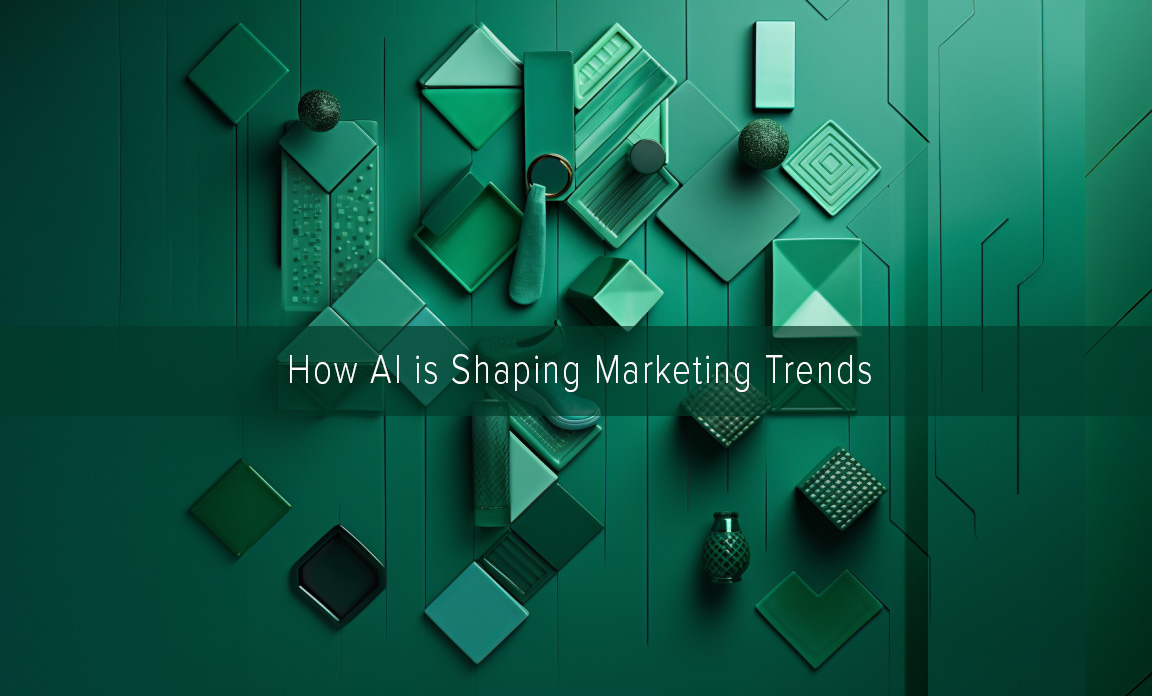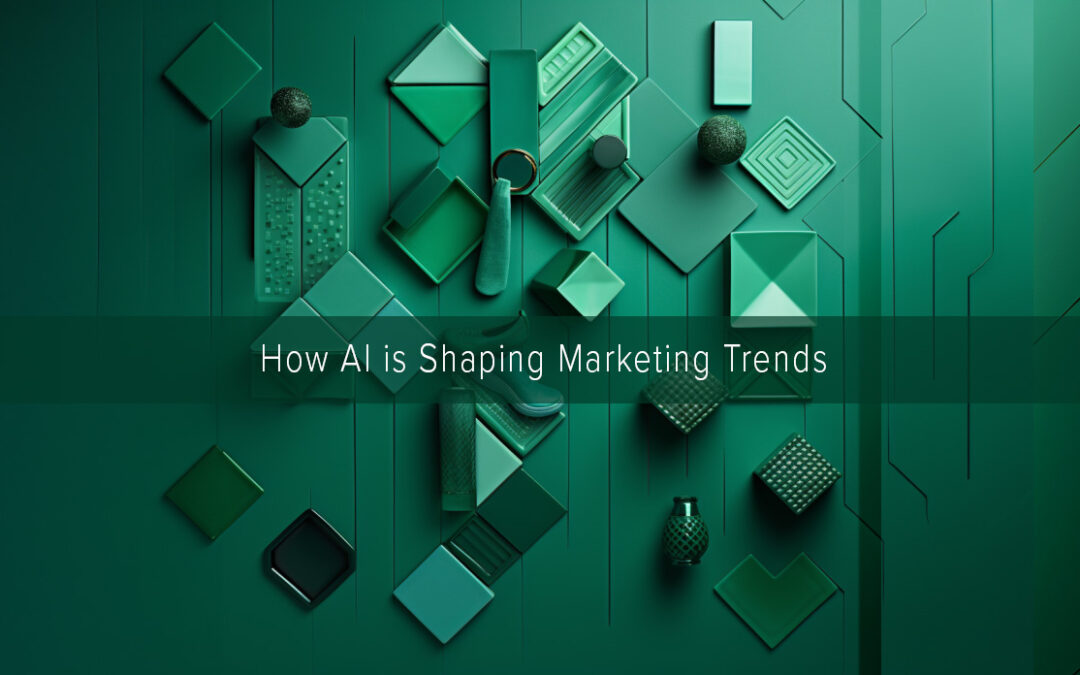
The marketing landscape is forever changing. As the world leans more into technology, the industry is increasingly pressuring CMOs to pivot to a digital-first mindset. In order to seek a competitive advantage, they’ll turn their team’s attention to artificial intelligence (AI). A popular buzzword, not all businesses know how to use it to their advantage. What savvy marketers are realizing is that non-human intelligence can actually better improve their understanding of real humans.
In 2024, marketers are going to rely on AI to focus on the following campaign strategies:
- Hyper-personalization
- Hyper-localization
- Influencer collaboration
- Video marketing
- Augmented reality marketing
- Voice search optimization
From its powerful data analysis capabilities to its campaign metrics, marketers use AI to tailor their campaigns to provide the optimal customer experience. Below is a breakdown of these trends that are poised to shape the industry in 2024.
Hyper-personalization for Enhanced Customer Experiences
![]() Consumers are craving personalized experiences, and AI is making that possible. Even though AI has been around for 60 years, its prevalence has increased tremendously over the past few years. Though the conversations typically center on ChatGPT, a lot of this year’s talk surrounds how to leverage AI to create more individualized customer journeys. Marketers seek new strategies for higher engagement and conversion rates. Targeting mass demographics no longer suffices. You have to target individual humans. Using AI-powered hyper-personalization is key for today’s marketers.
Consumers are craving personalized experiences, and AI is making that possible. Even though AI has been around for 60 years, its prevalence has increased tremendously over the past few years. Though the conversations typically center on ChatGPT, a lot of this year’s talk surrounds how to leverage AI to create more individualized customer journeys. Marketers seek new strategies for higher engagement and conversion rates. Targeting mass demographics no longer suffices. You have to target individual humans. Using AI-powered hyper-personalization is key for today’s marketers.
In order to exceed evolving customer expectations, marketers must rely on data and analytics to better understand their customers. Doing so through AI helps them meet customers where they are. AI can sift through vast amounts of information in real time to make insightful decisions on the types of authentic interactions to have with each person.
Smart marketers looking to gain a competitive advantage in 2024 will leverage hyper-personalization for:
- Data-driven content generation
- Detailed product targeting
- Next-best-action/recommendation engines
- Individualized or dynamic pricing
- Real-time customer segmentation
- Dynamic landing pages and websites
Starbucks has stayed ahead of the curve when it comes to using AI for real-time data. They capitalize on AI to send users unique offers based on their preferences, activity and past purchases. With more than 400,000 variations of hyper-personalized messages to send, their customers feel seen.
One caveat to mention with hyper-personalization is that marketers must handle it responsibly. The commoditization of AI raises concerns about privacy and ethics. Even though consumers demand a personalized experience, only about half of them actually trust brands to keep their data secure, according to The State of Personalization Report 2023 from Twilio Segment. Practicing transparency and striking the right balance between customization and respecting customer privacy is critical to maintaining trust.
As we look to what new heights we’ll reach with AI this year, understand that it is rapidly evolving and partly because it’s doing it on its own. That’s what makes AI unique – that it’s the first technology that can improve by itself. Wise marketers review their strategies every couple of weeks or months to make sure they’re staying relevant and competitive.
Hyper-localization
![]() Similar to hyper-personalization, hyper-localization in 2024 takes AI-powered customer data and examines how shoppers are searching and buying to create content based on the customer’s location. As ambitious brands master their primary markets, they’ll look to replicate that success in other cities where core customers live.
Similar to hyper-personalization, hyper-localization in 2024 takes AI-powered customer data and examines how shoppers are searching and buying to create content based on the customer’s location. As ambitious brands master their primary markets, they’ll look to replicate that success in other cities where core customers live.
Hyper-localization enables brands to culturally and emotionally connect with customers – a strategy that’s often overlooked. For businesses, this could mean running ads or sending emails targeting people in a specific region or city. Wise (formerly Transferwise), a London-based foreign exchange fintech company, was looking to expand into newer countries. They ran ads on social media to engage with the local audience. The ads ranged from animated videos with localized elements to static images with country-specific elements to ads with localized copy.
Their LinkedIn ad is respected for capturing the essence of Canada and has resonated with their audience.
In many cases, hyper-localization enables businesses to overcome language barriers and language accessibility constraints to reach new audiences. It also gives businesses another way to engage with customers by leveraging AI for chatbots to handle customer inquiries and provide support. These bots can offer personalized recommendations based on customers’ recent purchases or activity.
Another benefit of hyper-localization is that it can bring local communities together. Brands can drive awareness to local events and charities while demonstrating what their services can do to help. Talking about local topics and concerns builds trust among the community of potential customers and gives you a competitive edge.
Influencer Collaboration
![]() Influencer collaboration marketing will continue to thrive in 2024. However, authenticity and alignment with brand values are more crucial than ever to establishing trust among customers.
Influencer collaboration marketing will continue to thrive in 2024. However, authenticity and alignment with brand values are more crucial than ever to establishing trust among customers.
Influencers have largely been used in the B2C sector. However, with the increased reach social media has been able to provide businesses, we’ll see a trend toward more B2B influencers. They’ll become essential to brand strategies. But only in sharing real people and their real stories.
American Express has become a model for influencer marketing success on Instagram. Using the hashtag #AmexAmbassadors, the company launched a campaign with influencers who travel frequently and live luxuriously to demonstrate the exclusive perks of their platinum card. The goal was to convert managers and business executives to use the card for their own business travel and expenses. However, the campaign has expanded to include small business owners and end consumers as well.
Not to be ignored, AI has made advancements in this marketing strategy as well. It helps marketers overcome a slew of challenges:
- Preventing influencer collaboration fraud
- Performing deep analysis of influencer audiences
- Matching the right content to the right influencer
- Analyzing campaign metrics and performance
- Improving negotiations for influencer compensations and incentives
Video Marketing Evolution
![]() Video marketing certainly isn’t new, but its importance continues to grow. Brands are focusing this year on creating engaging and shareable video content that resonates with their target audiences.
Video marketing certainly isn’t new, but its importance continues to grow. Brands are focusing this year on creating engaging and shareable video content that resonates with their target audiences.
It’s virtually impossible to go online these days––whether social media or a random Web page––without running into a video calling out to you. Statista has reported that online videos have an audience reach of around 92.3% among Internet users across the globe. Due to the growing popularity of TikTok and the fact that people can browse videos from anywhere at any time, that statistic is not hard to fathom. Catering to this mobile-centric world, marketers are focusing on more vertical videos, as well as silent videos that can still be enjoyed from a crowded doctor’s office or train. Short-form videos (TikTok, Instagram, YouTube, Facebook) have also proven to be valuable marketing tools in instantly grabbing their customers’ attention.
2024 will see an uptick in live streaming. Live streaming tends to feel more authentic to consumers than pre-recorded video. Because it’s real-time, live streaming also tends to capture and hold viewer attention longer than their on-demand counterparts. Typically, viewers engage and interact more with live videos.
Just like the areas we’ve already mentioned, AI has had an impact on video marketing. Using smart algorithms, marketers are able to automate editing, analyzing content for better targeting and enhancing audience engagement. Expect enhanced personalization, real-time analytics, dynamic ads, voice-controlled experiences, emotional analysis, global translations and improved influencer collaborations all to gain momentum with video marketing in 2024.
Augmented Reality Marketing
![]() Augmented reality technology is becoming more accessible and will play a significant role in marketing this year. Brands leverage augmented reality to create interactive and immersive experiences for consumers. Augmented reality serves as a significant tool for storytelling, letting brands showcase their values and narratives in imaginative and captivating ways. It’ll allow them to distinguish themselves from their competitors’ traditional strategies.
Augmented reality technology is becoming more accessible and will play a significant role in marketing this year. Brands leverage augmented reality to create interactive and immersive experiences for consumers. Augmented reality serves as a significant tool for storytelling, letting brands showcase their values and narratives in imaginative and captivating ways. It’ll allow them to distinguish themselves from their competitors’ traditional strategies.
From virtual product demonstrations to interactive augmented reality experiences on social media platforms, this technology transforms the way businesses engage with their customers. More companies are following in the footsteps of Coca-Cola who used augmented reality to create an in-store visualizer for retail managers to see how their coolers would fit in their stores.
AI’s data-driven insights enhance augmented reality applications, offering customers personalized experiences that resonate with individuals. The integration of augmented reality and AI is set to redefine marketing strategies this year. It’s not just about catching the consumer’s eye, it’s about diving into their world and understanding their preferences.
Voice Search Optimization
![]() With the proliferation of voice-activated devices and virtual assistants like Siri, Google Assistant and Alexa, voice search is on the rise. Understanding and incorporating voice search optimization techniques can help make content more discoverable and rank higher in voice search results.
With the proliferation of voice-activated devices and virtual assistants like Siri, Google Assistant and Alexa, voice search is on the rise. Understanding and incorporating voice search optimization techniques can help make content more discoverable and rank higher in voice search results.
Voice search AI algorithms play a critical role in determining the results provided to users when they perform a voice search. Marketers must focus on conversational and natural language, incorporating long-tail keywords into their content. Plus, marketers must craft content that directly addresses common voice search queries within their niche. This is because voice search users typically seek quick and precise answers.
Users primarily make voice searches on mobile devices and often include location-based queries. To account for this trend, businesses need to ensure they make their websites mobile-friendly and that they optimize their content for local SEO.
The marketing landscape in 2024 promises to be dynamic and exciting, driven by AI, consumer expectations and societal changes. We’ll see how these factors create a new norm when it comes to hyper-personalization, hyper-localization, influencer collaboration, video marketing, augmented reality marketing and voice search optimization. By embracing these marketing trends, businesses can connect with their audiences in more meaningful ways and drive growth in this competitive landscape.





